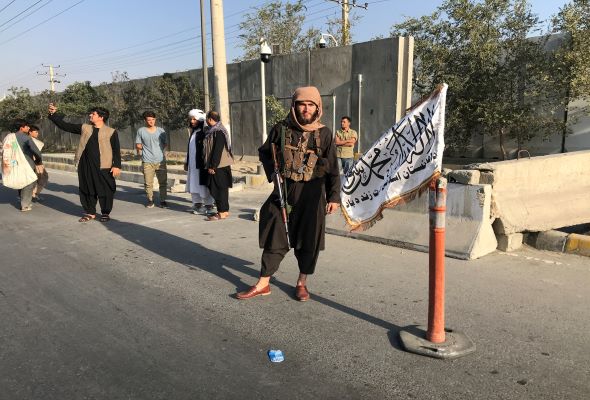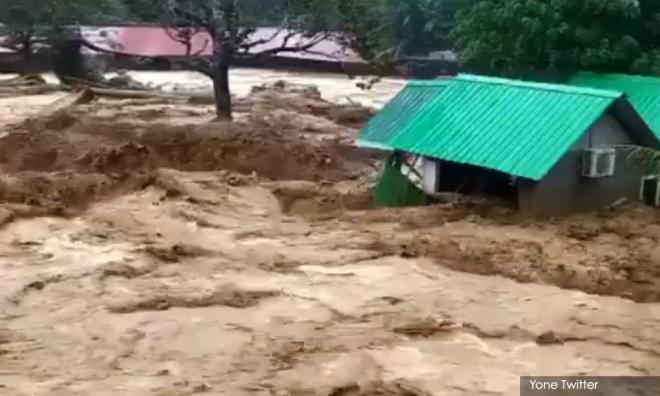
Published in Astro Awani & Asia News Today, image by Astro Awani.
The Taliban of today wants to engage the world and for the world to reach out to them.
But firstly, some pertinent questions as to why the US left Afghanistan in such a haste.
Why didn’t the US slow down the advance of the Taliban so as to open up space for final talks with the aim of a ceasefire?
This was in fact contained in the Trump-initiated “Agreement for Bringing Peace to Afghanistan” (the “Agreement”) signed in Doha last year. The “Agreement”, among other things, provided as follows:
“4. A permanent and comprehensive ceasefire will be an item on the agenda of the intra-Afghan dialogue and negotiations” (The “Agreement”).
“Intra-Afghan” refers to the two parties to the dialogue and negotiations, i.e., the government of the Islamic Republic of Afghanistan and the Taliban.
For one, the US could have exploited an “interior line” strategy – which allows for that consolidation of security forces inside a continuous and uninterrupted stretch of defensive (and mutually reinforcing) perimeters.
The rest of the territory and terrain with corresponding borders will have to be given up temporarily in anticipation of a future reconquest based on a role reversal, i.e., exploitation of exterior lines (e.g., attack on the “centre of gravity” of the Taliban such as the base location of the leadership combined with simultaneous flank attacks).
The core areas of the Taliban – in the aftermath of the US invasion of Afghanistan post-911 – has always been situated in the south and south-east. Indeed, as a “Pashtun-based” entity, the region is where the concentration of present-day Pashtuns is to be found.
But the US didn’t pursue the strategy. Instead, the US allowed the Afghan government to disperse its security forces based on political considerations.
Reminiscent of the American Civil War in relation to President Jefferson Davis’s strategy for defending the Confederacy, the Afghan government insisted on holding terrain through checkpoints and small outposts scattered all over the country. This posture, of course, allowed ex-President Ashraf Ghani to satisfy different regional-based constituencies.
In turn, this allowed the Taliban to effectively isolate and neutralise checkpoints and outposts – paving the way for the eventual collapse of the Afghan military.
The advance of the Taliban could have still been cushioned by, for example, luring them to attack outposts in “open space” so that the US air force could provide fire power and strike cover. The aircrafts could have flown “laterally” or “perpendicularly”, i.e., intersecting with the direction of the attacking Taliban to avoid friendly fire and collateral damage as well as ensuring optimal targets.
Be that as it may, the Taliban has proven to be militarily very adept and ultimately, “unbeatable”.
Deep knowledge of the terrain coupled with the ever-ubiquitous local tribal support in the (“surrounding”) countryside allowed the Taliban to move speedily towards encircling and trapping scattered and isolated Afghan security forces – cutting off lines of supply and communication.
The Taliban’s military sophistication is further demonstrated with the formation of an equivalent to an elite or special forces unit, i.e., Red Unit.
This Taliban special operations brigade serves both to spearhead assaults as well as a strategic reserve mobile force (to exploit and sustain any breakthroughs where resistance is heavy).
In addition to military fatigue, there’s also the question as to why the US choose to negotiate separately with the Taliban rather than either going through (with full backing) or side-by-side with the Afghan government. It sends the message that the US is finally “abandoning” the Ashraf Ghani administration – infamous for corruption and dysfunctionality.
This lack of respect by the US shown to a State and government that it recognises is puzzling and self-inflicting, and might prove harmful to the superpowers’ strategic interests in the years to come.
To military adroitness alongside the staying ideological power and political appeal of the Taliban coupled with their image as liberators is now added the evolution to a moderate brand.
Undoubtedly, the Taliban of yesteryears is not exactly the same as today.
Before engaging with the Taliban, it’s best to try to understand them according to their own standards.
To start with, the Taliban are idealists. This is critical in understanding the Taliban’s “extremism”.
They see the world as it ought to be – based on a very conservative interpretation and understanding of Islam to be sure.
But this is to be set against the historical background of the trauma of foreign invasion as well as the oppression of the rural population by both national and local rulers in the past.
The modernisation project of the Soviet-backed regime has had the effect of re-aggravating the urban and rural divide the latter of which continue to be bound to time-honoured traditions as embodied most prominently by the Pashtunwali code of honour (i.e., the tribal customs of the Pashtuns as inherited from pre-Islamic times and then fused with the Islamic way of life).
The alienation inflicted on the rural population as the majority cannot be strongly emphasised enough.
In short, the modernisation project represented an attack of the very identity of the rural Afghan. At the same time, the rural Afghan would come under the yoke of the local warlord.
A local practice abolished by the liberating Taliban was of course the bacha bazi, i.e., the custom of homosexual relationship between older men and boys (which it goes without saying is un-Islamic).
Thus, the Taliban’s motivation was the return (to the purity of) Islam as enforced according to the precepts of Syariah combined with an idealism that’s shaped by the Pashtunwali code of honour and values.
That’s the fundamental basis by which to understand the Taliban phenomenon.
It’s only then that we see how the Taliban ideals are manifested in extreme ways in their imbalanced and brutal treatment of women across all spheres of life.
The Taliban, therefore, isn’t to be understood as extremist in the same sense that Al-Qaeda and Daesh (Isis) are.
To repeat what’s a truism, they have no wish to implement a caliphate and hence their ideals are matched by their modest vision of an Islamic emirate. In this, the Taliban is similar to Hamas of Palestine in its quest to liberate Jerusalem (Al-Quds) and resist the Zionist Occupation.
The Taliban has never interfered in the internal affairs of its neighbours or elsewhere in the region and beyond, and doesn’t intend to do so.
Now that the Taliban is projecting its so-called moderate credentials, at least to the outside world, how then do we engage the Taliban?
The world should engage the Taliban by taking them at their face value, i.e., we should accept and embrace the new Afghan leadership – as long as they’re in power – without any pre-conceived notion or condition.
Best examples of countries to emulate would be China and India.
The next step would be then to nudge the Taliban to continue evolving and reforming, however small, towards a more balanced attitude that allows for a similar situation to exists and flourish as before, i.e., before the downfall of the previous government.
The Taliban in their political and military strategy and tactics have shown great flexibility in adapting to technology (modernity) such as the use of Facebook, Whatsapp, YouTube and Twitter.
Therefore, they certainly can be persuaded, for example, to liberate women from being home-bound as under the old Taliban regime. Or (again) to allow considerable female freedom that approaches the conditions under the twenty years of non-Taliban rule, even if not quite close (yet).
However, this has to be shown to be consistent with Islam and Afghan values.
Towards that end, only Islamic and Muslim countries are in a position to persuade and influence the Taliban to become more moderate than now.
Given that there’s a remnant holdout of the former administration in the Panjshir region under the leadership of Amrullah Salleh (former First Vice President), the Organisation of Islamic Cooperation (OIC) at the multi-lateral level and selected Islamic or Muslim countries at the bilateral level (of which Malaysia can play a part) should take the initiative to mediate – to preserve the status quo.
The preservation of the status quo – with its ever-present internal threat to Taliban rule – should serve as an incentive for further evolution and reform.
Perhaps then the stage could be set for national reconciliation on a wider level.
For now, Afghanistan has been “liberated” from foreign occupation (whether we like it or not).
Other than stabilising the chaotic situation from Afghans wanting to flee Taliban rule and urbanites expressing peaceful resistance, the Taliban need help across the board to govern the country.
The Taliban’s openness in welcoming foreign help and support is to be welcomed and engaged accordingly.
End note: By “multi-dimensional”, it’s not meant quantity (i.e., more than one) but quality – moving beyond a one-sided approach hemmed in by pre-conceived notions which preludes a meaningful understanding of the Taliban’s motivation and, by extension, our engagement with them.
Jason Loh Seong Wei is Head of Social, Law & Human Rights at EMIR Research, an independent think tank focused on strategic policy recommendations based on rigorous research.

